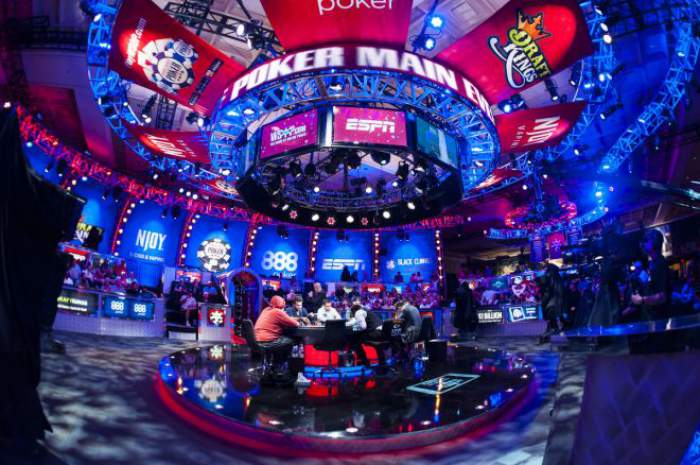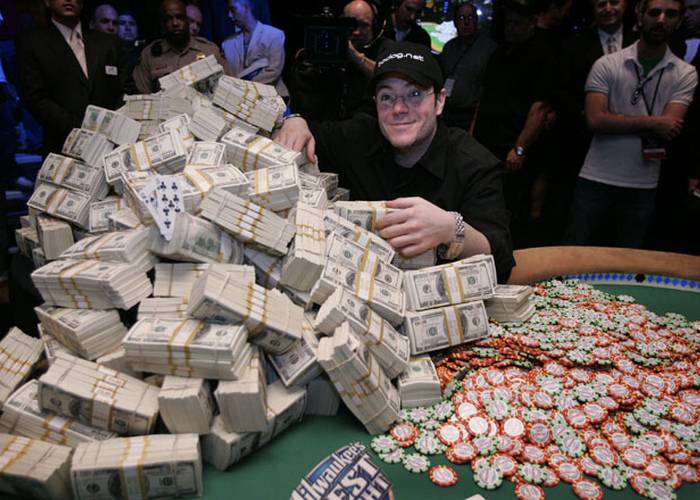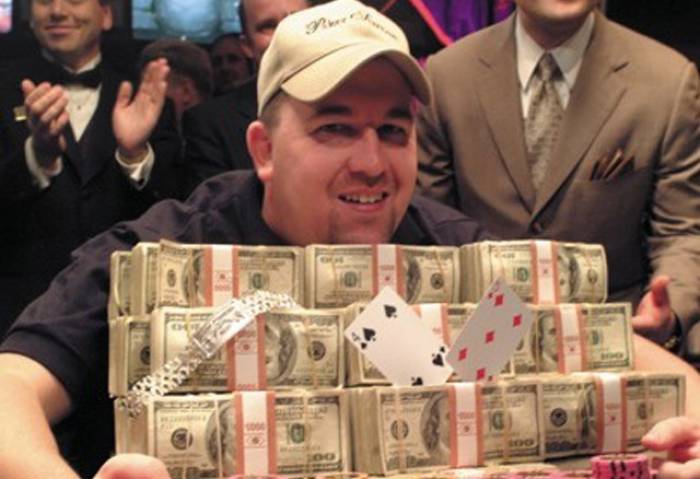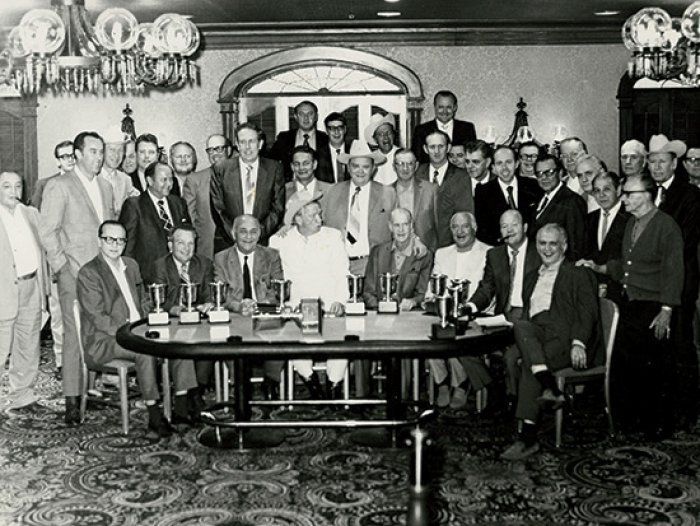The WSOP Main Event History in 10 Dates
The World Series of Poker has just announced the end of theNovember 9nine concept. Year after year this tournament hasn’t lost its prestige and is still a dream for poker players and amateurs worldwide. Here’s a look at the most important dates in the event’s history:
1) 2017: No moreNovember 9– A tradition established in 2008 has ended

After nine years, poker players and eager fans will no longer have to wait months to find out who the next WSOP Main Event champion will be. The WSOP is doing away with the November 9 tradition, and it will take effect immediately at the upcoming series.
This new change was decided upon after a four-year agreement was reached with Poker Central who recently acquired the global television and digital media rights to the WSOP. Under this new agreement, the WSOP’s longstanding relationship with ESPN has also been extended, which means daily live coverage of the WSOP Main Event will be provided starting on Day 1A until the event concludes and a champion is crowned. Prior to the WSOP Main Event, everyone can also expect an in depth coverage of the WSOP 2017 streamed live by Poker Central.
From the announcement in the WSOP website,
“ESPN has been our home since 2002, and we’re delighted to extend the relationship into the next decade,” said Ty Stewart, executive director, WSOP. “Having every day live coverage of the WSOP Main Event is truly a huge commitment on behalf of ESPN and Poker Central, and we look forward to delivering to our faithful audience wall-to-wall action from the outset for the very first time.”
2) 2006: Jamie Gold wins the largest WSOP Main Event ever hosted

Through the years, the WSOP Main Event has always been the one tournament that players from all over the world try to conquer. Winning a coveted WSOP bracelet in this event comes with a lot of prestige and it earns a player a spot in the poker history books. In 2006, Jamie Gold joined the exclusive group of champions after eliminating 7 players at the final table. He overcame a field of 8,773 players, the largest-ever seen attendance at the WSOP Main Event, and claimed the US$12 million first prize.
3) 2004 : The WSOP quits the Binions Horseshoe

Back in 1970, casino owner and poker player Benny Binion , formed the first WSOP that offered a variety of poker cash games at the Binion’s Horseshoe Casino. From then on, the series was hosted annually with an increasing number of events per year, including the Main Event, a Texas Hold’em freezeout tournament. In 2004, the casino was bought by Harrah’s Entertainment, since been known as Caesars Entertainment, which included the acquisition of the WSOP brand. That year would be the last time the series was held at Binion’s. It was moved the following year to where it is until today, at the Rio Hotel and Casino.
4) 2003: Online qualifier Chris Moneymaker triggers the poker explosion

Many attribute the historic poker boom to events that took place at the 2003 WSOP Main Event. During that series, ESPN introduced the hole-card-camera table. When the event hit the tv screens, everyone was awed as they watched the game presented in a new and exciting perspective. While this was already mind blowing on its own, everyone also witnessed amateur player and online qualifier, Chris Moneymaker , convert his satellite ticket into a US$2.5 million payout by defeating known pro Sammy Farha at the final heads up round of the WSOP Main Event. Moneymaker’s story inspired the world that amateurs could defeat the pros, and it also triggered the biggest poker explosion in history. Both the live circuit and online world experienced a massive influx of players eager to make a living from playing poker.
5)1997:Stu Ungar “The Comeback Kid”
In 1980, Stu “The Kid” Ungar took the WSOP Main Event by surprise after defeating pro Doyle Brunson for the title. Only 27 years of age at the time, he was considered the youngest player to ever win the championship title and he wasn’t even a Texas Hold’em pro. Ungar was known more for his domination at gin rummy. The following year, Ungar returned to the WSOP Main Event and once again championed the tournament for back-to-back titles. However, despite his wins, Ungar fell off the grid for many years due to his addiction to gambling and drugs and combined misfortunes.
To the surprise of many, in 1997, Ungar found his way back into the WSOP driver’s seat and claimed his third Main Event championship title. Due to this, he was tagged as “The Comback Kid” with many friends and fans glad to see him back on the felt. His return however was short-lived. Ungar passed away the following year in a Las Vegas motel room.
becomes the youngest player to win the Main Event
In 1989, Phil Helmuth usurped Stu Ungar’s record for being the youngest player to win the WSOP Main Event. At 24 years of age, he took down the two-time back-to-back champion Johnny Chan who was in hot pursuit of a third consecutive championship title. Helmuth is also known as the “Poker Brat” for his repeated antics and temperamental behavior at the table. To date, Helmuth has earned 14 WSOP bracelets and 52 WSOP final table appearances.
7) 1987: Johnny Chan first non-American born to win the WSOP
The 1987 WSOP Main Event witnessed its first non-American born poker player win the tournament. Chinese-born American, Johnny Chan, overcame a field of 152 players and defeated USA’s Frank Henderson for the title. Chan returned the following year to defend his title with 167 players signed up. He successfully defeated Erik Seidel at the final heads up round to claim back-to-back titles.
Nicknamed the “Orient Express”, Chan returned to the WSOP Main Event in 1989 to defend his title once more and impressively made it all the way to the final heads up match against a young player by the name of Phil Helmuth. While favored to win and become the first player to win three consecutive championship titles, it was not to be.
8) 1982: Jack Straus WSOP Main Event, “A Chip and a Chair”
That famous line, “a chip and a chair” was coined back in 1982 when Jack “Treetop” Straus was down to one chip but then went on to stage the biggest comeback and win the WSOP Main Event. While the chip denomination in the stories vary, either $25 or $500, the events remained fairly the same. Without announcing “all in”, Straus physically slid all his chips in the middle, was called, then proceeded to lose the hand. As he was getting up from the table, one of his chips was discovered under a napkin and since there was no verbal declaration of his action, the tournament directors allowed him to continue playing. He won US$520,000.
9) 1972: Doyle Brunson strikes a deal to avoid IRS
The 1972 WSOP attracted only eight players to the US$10,000 buy-in Main Event as most others opted for the cash side games. When the field was down to three players, Doyle Brunson, Thomas “Amarillo Slim” Preston, and Walter “Puggy” Pearson, paused the game to discuss a deal. According to varying stories, Brunson and Pearson were not keen on winning the tournament, a decision brought on by the presence of the media. Brunson felt that if he won, he may be denied a spot in the lucrative cash games but most importantly, he may be subject to a tax audit by the Internal Revenue Service (IRS). Preston, on the other, wanted to win. An ICM deal was struck and Preston went on to win the event.
10) 1969: The Birth of an Idea

In 1969, an invitational event called the Texas Gamblers Reunion was hosted by Tom Moore at the Holiday Hotel and Casino in Reno, Nevada. It was a week-long poker event featuring a variety of poker games. All the big named card sharks were in attendance including Benny Binion, owner of the Binion Horseshoe Casino in Las Vegas.
Sensing a great opportunity, Binion created the WSOP and held the inaugural event at his establishment in 1970. The series started off with only 37 players and all the events were cash games. In order to be able to publicize the event and attract more players, the Texas Hold’em Freezeout tournament, known today as the WSOP Main Event, was added to the games.
Today, the WSOP is still the most prestigious poker event worldwide with the US$10,000 Main Event held in the highest esteem.
Article by Triccia David























